Oeyama in Fukuchiyama City, Kyoto Prefecture, there are three legends of exterminating Oni, and there are many legends, folk beliefs, and rituals related to Oni in various parts of the prefecture, centering on Mt.
Oni are often thought of as anti-social and anti-moral, and as objects to be exterminated. However, when one deciphers the legends of oni throughout the prefecture, one can see that oni are not absolutely evil, and the sadness of those who have died an untimely death comes to the surface.
Shuten Doji died at the end of his life, saying "There is no side path for Oni ...... (Oni do not lie, cheat, or go astray)" Why did he say that Oni were not to blame? Why did he say that Oni are not bad?
Why was the legend of Shuten-Doji born in Mt. Oe, and what does it tell us about oni?
1. Conquest of Shuten-Doji by Minamoto no Yorimitsu
2. The extermination of Oni by Prince Maroko
3. The Legend of Hikoimasu no Miko's Oni Extermination
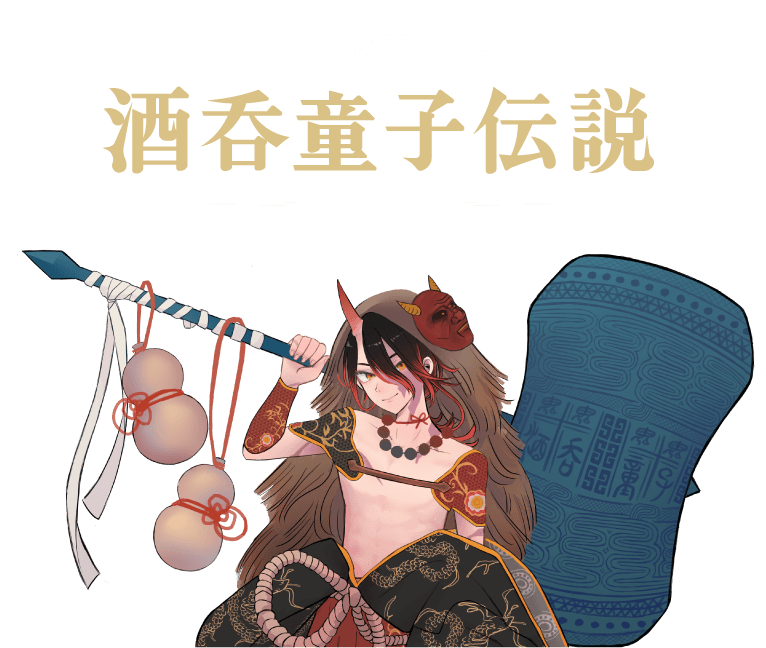
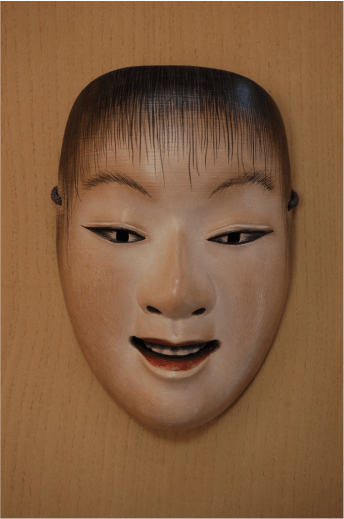
He was born in the Heian period (794-1185) in Echigo and Omi provinces. According to the Echigo version, his childhood name was Gedomaru (外道丸), and he became a child of Kunikamiji Temple (Tsubame City, Niigata Prefecture). He was an exceptionally beautiful boy and received many love letters, but he burned them without reading them. After that, he moved from mountain to mountain, finally settling in Mt. Oe.

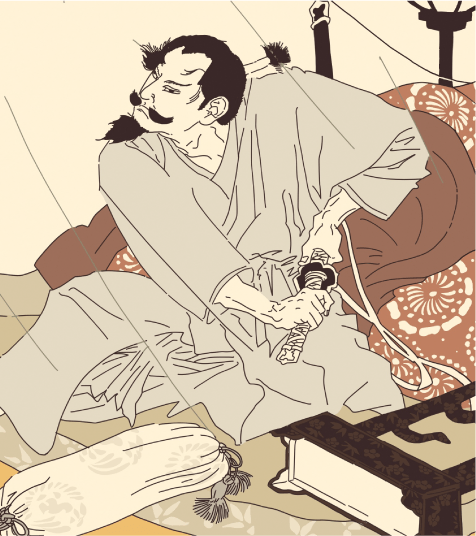
He was the central military commander who defeated Shuten-Doji. In medieval literature, he is regarded as one of the four legendary medieval warriors along with Sakanoue no Tamuramaro, Fujiwara no Toshihito, and Fujiwara no Yasumasa. Although his military exploits in defeating Oni are emphasized, his real image from historical records is that of a worldly-wise official and aristocrat who was a vassal of the Fujiwara regents and Michinaga. He was a wealthy man who gave enormous sums of money to Michinaga and his family, and rose through the ranks.

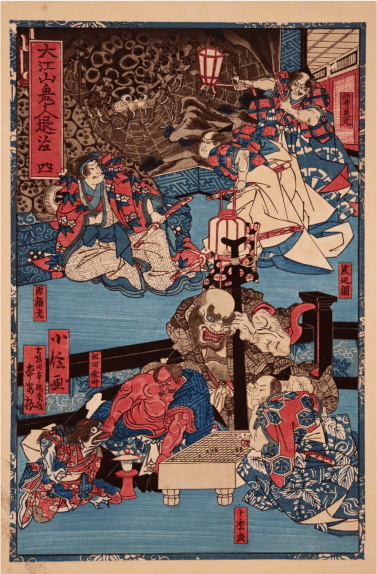
The Four Heavenly Kings under Minamoto no Yorimitsu (Watanabe no Tsuna, Sakata no Kintoki, Urabe no Suetake, and Usui Sadamitsu). They are the warriors of the Minamoto clan, the Michinaga zuijin, and the Kanmu Heishi clan. Sakata no Kintoki is an adult version of Kintaro from a children's story.

During the reign of Emperor Ichijo, men and women of various ranks went missing one after another in the capital of Heian-kyo. When the yin-yang master Abe no Seimei divined the cause, he found that it was the work of a Oni named Shuten-dohji from Mount Oe in the northwestern part of the capital. Minamoto no Yorimitsu, Fujiwara no Yasumasa, and others were ordered to defeat him, and they headed for Mount Oe with the Four Heavenly Kings in tow.


On their way to Mt. Oe, Minamoto no Yorimitsu and his men met three mysterious old men. The old men were incarnations of the gods of Hachiman, Sumiyoshi, and Kumano, who bestowed two treasures on Yorimitsu and his companions.
One was “Jimben Kidoku-Shu” a sake that seals the divine power of Oni.
The other was a “hoshi-kabuto” a helmet that would not break even if pierced by an arrow or a spear.
Thus, with the help of the gods, they entered Mt. Oe.


On their way to explore Mt. Oe, Yorimitsu and his followers, disguised as Yamabushi (mountain priests), met a princess washing her bloodied kimono by the river.The group asked the princess for more information about the Oni’ s dwelling place and arrived at the mansion of Shuten-Doji. Believing Yorimitsu and the others to be yamabushi, Shuten-Doji welcomed them, treated them to blood wine and human flesh, and began to tell them stories about himself. Yorimitsu served the Onis with the sake they received from the gods, and when the Onis had fallen asleep under the influence of the sake, he killed them.Shuten-Doji was beheaded by Yorimitsu with his treasured sword “Higekiri” but even with only his head, he bit down on Yorimitsu’ s helmet and said “There is no side path for Oni ...... (Oni do not lie, cheat, or go astray)” and breathed his last.
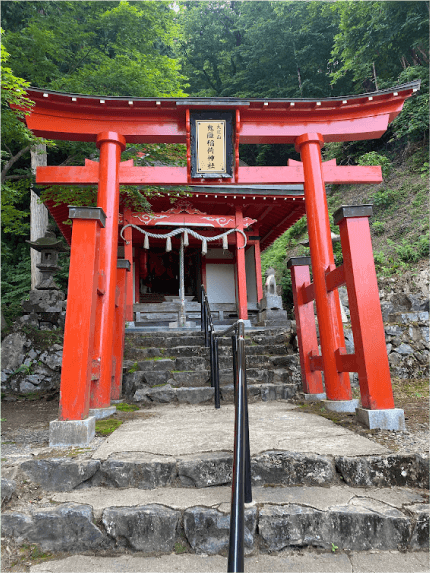
Onitake Inari Shrine is located at an altitude of 640 meters on the mountainside of Mt. Oe. According to shrine legend, Tanba no Michinushi no Mikoto built a shrine at the former site of his father, Hikoimasu no Miko. The original location of the shrine was near the summit, but in the mid-19th century, the shrine name was changed to the name of a branch of the Fushimi Inari Taisha shrine, and the shrine was moved to its current location.The deity Uka no Mitama no Kami is the god of good harvest. Oni-maru Inari Shrine, located below the main shrine building, is the site where Yorimitsu tested the sword Onikirimaru, which is said to he used to slay Oni.
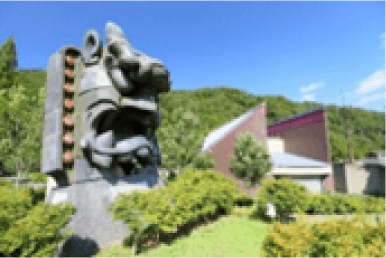
This museum introduces the legend of Oni in Mt. Oe and displays traditional performing arts related to Onis from all over Japan and Oni/demon masks from around the world.The museum was opened on the site of the former Komori Mine in order to use the “Three Legends of Oni-Exterminating of Mt. Oe” as a catalyst for town revitalization. The building has an exterior reminiscent of the strength of Oni. In addition to historical materials, the museum also exhibits modern unique works of Oni created by people of today.
Bakemono is, as the character says, a monster that is disguised as a human being...That is why there is sadness in it," said Dan Tokumaro, who played the first Tange Sazen and was a famous actor in the talkie era. This is the reason why Japanese are attracted to Oni, and the huge success of the anime "Demon Srayer (Kimetsu no Yaiba)" is probably due to its underlying depiction of this. Before Minamoto no Yorimitsu and his followers are cheated out of their lives, Shuten Doji exclaims, "There is no side path for Oni ...... (Oni do not lie, cheat, or go astray)". This famous line is the origin of the "Legend of Shuten-Doji," which conveys the sorrow of Oni. In "Minamoto no Raiko Yakata Tsuchigumo Yokai wo nasuzu" (The Spider Spider Specters of Minamoto no Yorimitsu) (Utagawa Kuniyoshi), painted in the Edo period, there is a depiction of a ground spider behind Yorimitsu and numerous evil spirits of the mountain and river behind the four Heavenly Kings. This is a scathing caricature that depicts the anger of the common people toward those in power who forced harsh policies on them during the Tempo Reforms. Yorimitsu is likened to Tokugawa Ieyasu, the four heavenly kings to Mizuno Tadakuni and other shogunate vassals, and the evil spirits of rivers and mountains are said to be the cries of the common people who were tormented. In the Edo period, the spirit of rebellion of Oni and evil spirits of rivers and mountains (the common people) against those in power (Minamoto and Tokugawa) matured, and this spirit has been entrusted to the "legend of Shuten-Doji". The "Legend of Shuten-Doji" has not faded over the past 600 years, and it continues to influence new legends of Oni such as "Demon Srayer", and continues to transmit Japanese Oni culture throughout the ages.
Vice President of the World Oni Society / Kyoto Institute for the History and Culture of Journalism, LLC / Historical Writer
After working for a publishing company, this individual transitioned to become a caster and director for NHK and other broadcasters before becoming a scriptwriter. They received the Agency for Cultural Affairs Art Festival Award for the MBS (Mainichi Broadcasting System) program "Eizou 80' Tomodachi Soya Misaki Hatsukobe River Yuki." Following roles as a planning and producing producer at Kansai Television and Kyoto Channel, they went on to manage a planning and production company for programs, publications, and cultural projects. As a historical writer, they engage in writing, teaching, and serving as a program commentator. They also contribute as a committee member for various local government committees, including the preservation of Kyoto's three mountains, selection of Kyoto heritage, and tourism.
She is the author of many books, including "Kyoto 'Makai' Pilgrimage", "Kyoto Kisai Monogatari", "A Thorough Guide to Kyoto's grace" (published by PHP Institute, Inc.), and "Kyo Onna ni Manabu" (Learning from Kyo Onna) (published by Mitsumura Suiko Shoin Publishing Co., Ltd). His most recent book is "Nihon no Oni Zukan" (co-authored, published by Seigensha Art Publishing, Inc.).

『Kyoto Makai Pilgrimage』by Oka Manami(PHP Institute, Inc.)
*Currently available only in e-book format.